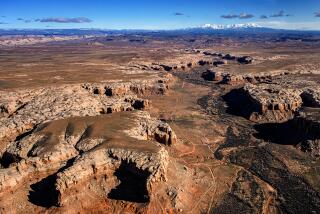Parsons Captured Essence of Gnatcatcher Saga
- Share via
The July 28 Commentaries, “Gnatcatcher: Imperiled Species or Specious No-Growth Ploy?” were excellent reading. While many aspects of Hugh Hewitt’s argument seem factually illusive, one particular point is most pervasive: the veiled assertion that lands in “public ownership” are somehow forever protected from development or development impact.
Lands in “public ownership” range from sidewalks, parking lots and flood control channels to military bases, greenbelts and parks. In and of itself, “public ownership” mandates no necessary protection, but such lands may be assumed to be protected by local codes or state or federal laws--codes, laws and/or legislation that are continually amended (“planning fluidity”) and certainly not necessarily in favor of natural resources.
For instance, there’s the current, hotly debated proposed oil/mineral development of the (once-thought-to-be-protected) pristine Alaskan National Wildlife Refuge. Conversion of the Tustin air base to potential development versus open space is another example. Camp Pendleton has been more than casually mentioned for a future airport (as has the El Toro base) and is the subject property for a potential alignment of a toll road segment.
Without debating the merits or demerits of such proposals, the fact is that nothing in “public ownership,” regardless of its present land-use status or branch of government oversight, can be assumed to be safe from development or its inherent impacts. Not now, not ever. This includes coastal sage scrub.
In the case of Orange County parks, anyone making a case that these parklands are protected under the guise of “public ownership” is either uninformed or is blatantly lying. Perhaps a more pertinent question is “protected from what?”
O’Neill Regional Park, a “publicly owned,” relatively narrow, linear strip of arroyo about 2.5 miles long, is such an example. This once-wild, steep-walled section of “wilderness park,” acquired as mitigation for development because of its incredible sycamore riparian vegetation, looks like a war zone. Twenty lanes of roadway have been approved through this “wilderness park.”
Tens of thousands of additional square feet have been denuded. Time-sculpted, craggy canyon walls have been chopped, torn, and technologically and smoothly remanufactured, and homes have been built within near-spitting distance of now-closed (largely because neighbors complained about pre-existent campfire smoke) camping grounds. “What” did “public ownership” protect?
What O’Neill Regional Park’s “public ownership” seems to have protected is development’s right to sue, pollute and destroy publicly owned lands.
But there’s one thing for sure: Hewitt isn’t “publicly owned.” It’s clear he’s been bought and paid for by the Orange County building industry.
SHERRY LEE MEDDICK, Silverado
More to Read
Sign up for Essential California
The most important California stories and recommendations in your inbox every morning.
You may occasionally receive promotional content from the Los Angeles Times.













